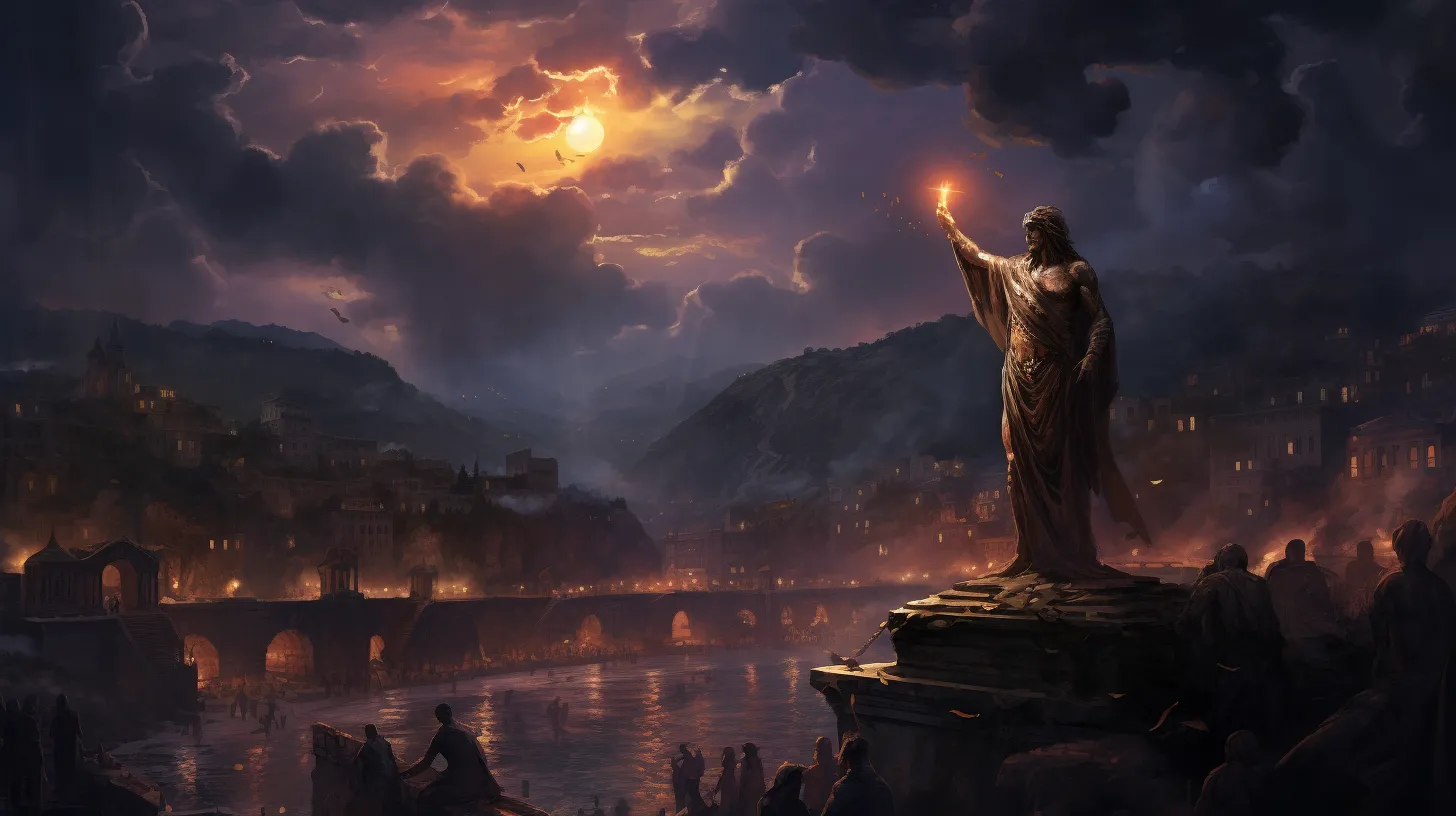A significant part of what we know about ancient Roman beliefs and their way of life is linked to the mythical creatures that appear frequently in their stories.
As you investigate the myths of Rome, you’ll come across fascinating beasts that reflect society’s deep-seated fears, its core values, and what they aspired to achieve.
Centaurs, for instance, represent the complex interplay between human intellect and animal instinct, while griffins are symbols of might and dignity.
Harpies serve as messengers of retribution, embodying the Romans’ belief in punitive justice. The minotaur, confined to a maze, illustrates the Romans’ intrigue with the vast and intricate nature of their own civilization. Sirens, with their beguiling songs, serve as a caution about the dangers of unchecked yearning.
These creatures from mythology are more than just old stories; they are enduring symbols that provide us with an understanding of human tendencies and the intellectual landscape of the ancient world.
They offer a perspective through which we can see the strength and impact of Roman cultural stories.
Custom Quote: ‘Mythical creatures of Rome: mirrors of an empire’s soul, reflecting its deepest fears, highest aspirations, and intricate truths.’
Legendary Creatures of Rome

You’ll encounter a fascinating array of legendary creatures in Roman mythology, each with its own unique tale and significance.
Delve into the ancient world, and you’ll find the fauns, part man, part goat, wielding their supernatural powers.
These Roman mythological creatures, from the deadly basilisk, known as the serpent king, to the wise centaurs, masters of archery, embody the rich tapestry of Roman folklore.
The formidable Minotaur, with a bull’s head and a man’s body, trapped within an intricate labyrinth, stands as a testament to the imaginative prowess of these myths.
Your grasp of this pantheon isn’t just about knowledge—it’s about asserting dominion over the captivating and perilous realm of the Roman imagination.
Fearsome Beasts in Battles

As you delve deeper into Roman mythology, you’ll encounter fearsome beasts that played critical roles in ancient battles, each embodying the chaos and power feared by warriors and civilians alike.
These creatures weren’t mere footnotes in mythological tales; they were central figures that symbolized the ever-present dangers and moral lessons of their time.
The Minotaur: a living labyrinth of fury, forcing enemies to confront the beast within.
Griffins: majestic, yet deadly, guardians of the battlefield, embodying supreme power.
Centaurs: wild-hearted archers, chaotic in nature, blurring the lines between man and monster.
These legendary beings weren’t just figments of imagination; they were manifestations of the deepest human fears and desires, each demanding your utmost respect and strategy to overcome.
Symbols in Roman Myths

In Roman mythology, each of these five beasts serves as a potent emblem, reflecting core aspects of human nature and societal values.
Fauns, with their dual nature, remind you of the inherent balance between civility and wildness within.
Griffins, as majestic mythical creatures, represent the pinnacle of strength and wisdom, embodying leadership and authority that’s unquestionably yours to wield.
Harpies personify the consequences of misdeeds, a stark warning that justice is an inevitable force.
Minotaurs, lurking in tangled paths, echo the chaos you must navigate and master in life’s complex labyrinth.
Finally, the Sirens encapsulate the perilous allure of desire, urging you to remain vigilant against seductive distractions that can steer you off course.
These mythical creatures guide and caution, their symbolism a map to understanding and controlling the human experience.
Influence on Arts and Culture

Often, you’ll encounter Roman mythology’s beasts in a multitude of artistic expressions, from ancient sculptures to Renaissance paintings, reflecting their enduring cultural significance.
When you examine the artistic legacy the Ancient Romans left behind, you are not merely viewing mythical representations; rather, you are engaging with a profound narrative that has influenced the very foundation of Western culture.
Here’s what these creatures stir within us:
- A sense of awe at the grandeur of ancient narratives
- A feeling of connection to the fears and dreams of our ancestors
- An appreciation for the timeless allure of mythological symbolism
The beasts of Roman lore aren’t just relics of the past; they’re catalysts for creativity and emotion, continuously inspiring artists to explore the depths of human imagination.
Comparing Greek and Roman Beasts

Exploring the differences between Greek and Roman mythological beasts, you’ll find that while many creatures share origins, their stories and symbolism diverged under Roman influence.
Take the Fauns, for instance; these part man, part goat entities with supernatural powers, echo the Greek satyrs yet they embody a distinct Roman spirit.
Similarly, the Chimera, a fearsome three-headed monster known for its fire-breathing prowess, stood as a symbol of volcanic power, a menace depicted vividly on ancient Roman pottery.
In the case of the Minotaur, this bull-headed maze-dweller represents not just chaos and unpredictability but also the consequences of defying the gods. The Harpies, with their womanly faces and bird bodies, personify swift, unavoidable divine retribution.
Each beast in Roman lore holds a mirror to society’s fears and divine warnings, shaped by a uniquely Roman worldview.



